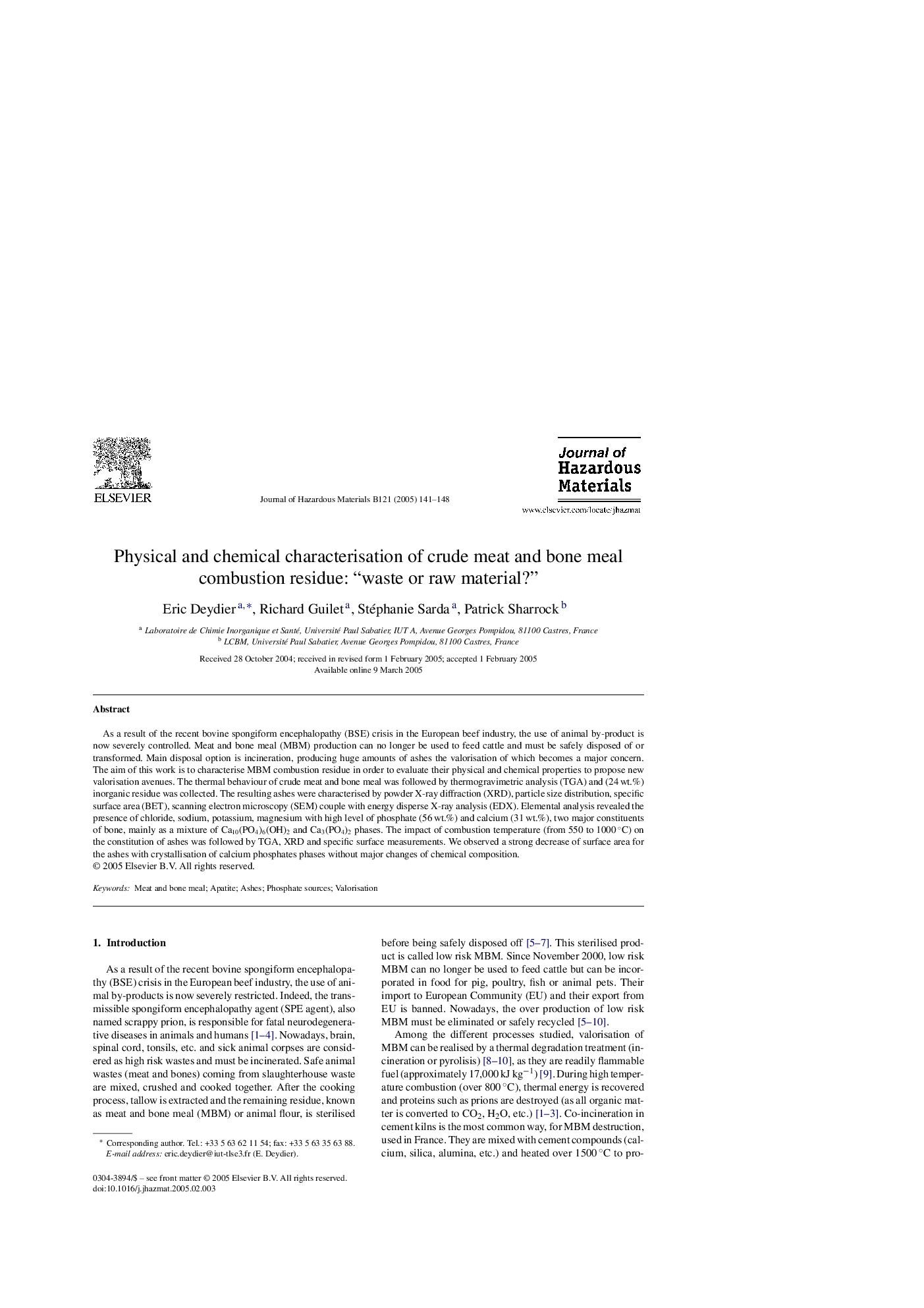| Article ID | Journal | Published Year | Pages | File Type |
|---|---|---|---|---|
| 9674275 | Journal of Hazardous Materials | 2005 | 8 Pages |
Abstract
As a result of the recent bovine spongiform encephalopathy (BSE) crisis in the European beef industry, the use of animal by-product is now severely controlled. Meat and bone meal (MBM) production can no longer be used to feed cattle and must be safely disposed of or transformed. Main disposal option is incineration, producing huge amounts of ashes the valorisation of which becomes a major concern. The aim of this work is to characterise MBM combustion residue in order to evaluate their physical and chemical properties to propose new valorisation avenues. The thermal behaviour of crude meat and bone meal was followed by thermogravimetric analysis (TGA) and (24 wt.%) inorganic residue was collected. The resulting ashes were characterised by powder X-ray diffraction (XRD), particle size distribution, specific surface area (BET), scanning electron microscopy (SEM) couple with energy disperse X-ray analysis (EDX). Elemental analysis revealed the presence of chloride, sodium, potassium, magnesium with high level of phosphate (56 wt.%) and calcium (31 wt.%), two major constituents of bone, mainly as a mixture of Ca10(PO4)6(OH)2 and Ca3(PO4)2 phases. The impact of combustion temperature (from 550 to 1000 °C) on the constitution of ashes was followed by TGA, XRD and specific surface measurements. We observed a strong decrease of surface area for the ashes with crystallisation of calcium phosphates phases without major changes of chemical composition.
Related Topics
Physical Sciences and Engineering
Chemical Engineering
Chemical Health and Safety
Authors
Eric Deydier, Richard Guilet, Stéphanie Sarda, Patrick Sharrock,
